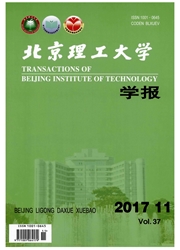

 中文摘要:
中文摘要:
针对相控阵雷达阵列天线空时快拍数据模型,研究空时二维联合分辨下界(STJRL,简称联合下界).从检测理论出发,采用最小错误概率准则,给出了联合下界关于信噪比、空时信号波形、分辨概率的表达式.联合下界表达式与一维分辨下界比较表明空时二维联合分辨充分利用了回波信号在空间频率和多普勒频率上的二维差异,分辨性能优于一维分辨.通过MonteCarlo仿真比较了空时联合分辨下界和信息论准则方法(AIC)、最小描述长度方法(MDL)得到的实验分辨性能,结果表明AIC与MDL方法的δt/δft~RSN曲线都在联合分辨理论下界曲线之上,而似然比检测器δt/δft~Rsw曲线与空时联合分辨下界曲线符合得很好.
 英文摘要:
英文摘要:
Aiming at space-time snapshots received by an array antenna, the method of space-time joint resolution limit (STJRL) is studied on the basis of statistic detection theory. It could be derived from minimum probability of error criterion that, in Gauss white noise context, the STJRL is approximated by a simple expression related to the signal to noise rate (SNR), the array manifold, the signal waveform and the resolution successive rate. The comparison of STJRL and 1-D resolution limit of traditional radar antenna indicates that space-time 2-D processing could achieve higher performance as it exploits two dimensional differences between target echoes. Through Monte Carlo simulation, the STJRL was also compared with the empirical performance of the Akaike information criterion (A/C) method and mimimun desc- ription length method (MDL). The results show that the curves of SNR versus δt/δtf obtained from AIC and MDL stay above the curve predicted by STJRL, and that the curve of SNR versus δt/δtf from likelihood ratio test (LRT) detector matches the theoretic STJRL curve well.
 同期刊论文项目
同期刊论文项目
 同项目期刊论文
同项目期刊论文
 New analytical approach to detection threshold of a dynamic programming track-before-detect algorith
New analytical approach to detection threshold of a dynamic programming track-before-detect algorith 期刊信息
期刊信息
